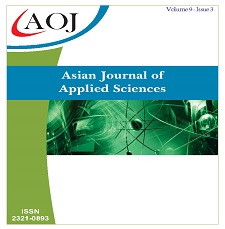The Organoleptic Properties of Food Products from Tempe Lake Fish
DOI:
https://doi.org/10.24203/ajas.v9i3.6624Keywords:
Fish floss, fish cake, color, texture, smell and tasteAbstract
The potential freshwater fish of Lake Tempe has long been consumed by the local community. However, its use is minimal. This article describes the organoleptic properties of fish cakes and fish floss as the development of various forms of food made from fish of Tempe Lake. The types of fish used as essential ingredients are Channa Striata and Monopterus Albus. The organoleptic test involved 70 panelists from the Department of Agricultural Technology, Universitas Negeri Makassar. Panelists assessed the color, taste, smell, and texture of the two food products. This result of the study describes the results of the organoleptic test with a comparison figure and t-test. Organoleptic test results showed that the panelists preferred the fish floss from Channa Striata for color, smell, and taste compared to fish floss from Monopterus Albus. Panelists' assessment of the fish cake from Channa Striata was better on smell and texture, while Monopterus Albus was preferred on the color and taste test. The T-test results showed that the panelists' assessments for fish cakes from Channa Striata and Monopterus Albus were similar. However, the organoleptic characteristics of fish cake are different between two kinds of lake fish.
References
H. Haerunnisa, B. Budimawan, S. Alam Ali, and A. I. Burhanuddin, “Management Model of Sustainability Fisheries at Lake Tempe, South Sulawesi, Indonesian,” Int. J. Sci. Res., vol. 4, no. 5, pp. 2319–7064, 2015.
M. Hatta, N. A. Umar, S. Mulyani, and I. Suryani, “Study food habits of fishes in Tempe Lake,” Int. J. Environ. Agric. Biotechnol., vol. 4, no. 4, pp. 1217–1222, 2019.
A. M. Hariati, A. Yuniarti, W. E. Kusuma, and D. G. R. Wiadnya, “Albumin and enzyme profiles of dwarf snakehead, Channa gachua caught from River Brantas, East Java,” in Journal of Physics: Conference Series, 2019, vol. 1146, no. 1, p. 12041.
E. Been and L. Kalichman, “Lumbar lordosis,” Spine J., vol. 14, no. 1, pp. 87–97, 2014.
N. R. A. Halim, H. M. Yusof, and N. M. Sarbon, “Functional and bioactive properties of fish protein hydolysates and peptides: A comprehensive review,” Trends Food Sci. Technol., vol. 51, pp. 24–33, 2016.
A. Bognar, “Comparative study of frying to other cooking techniques influence on the nutritive value,” Grasas y Aceites, vol. 49, no. 3–4, pp. 250–260, 1998.
M. Xiao, F. L. Cooke, J. Xu, and H. Bian, “To what extent is corporate social responsibility part of human resource management in the Chinese context? A review of literature and future research directions,” Hum. Resour. Manag. Rev., vol. 30, no. 4, p. 100726, 2020.
R. Romadhon, U. Amalia, and A. D. Anggo, “Quality Improvement of Catfish Floss (Clarias gariepinus) Through Oil Reduction Technology with Spinner and Press Tools,” Omni-Akuatika, vol. 15, no. 2, pp. 36–42, 2019.
Downloads
Published
Issue
Section
License
Copyright (c) 2021 Nurlita Pertiwi, Darwish, Muhammad Ardi

This work is licensed under a Creative Commons Attribution-NonCommercial 4.0 International License.
- Papers must be submitted on the understanding that they have not been published elsewhere (except in the form of an abstract or as part of a published lecture, review, or thesis) and are not currently under consideration by another journal published by any other publisher.
- It is also the authors responsibility to ensure that the articles emanating from a particular source are submitted with the necessary approval.
- The authors warrant that the paper is original and that he/she is the author of the paper, except for material that is clearly identified as to its original source, with permission notices from the copyright owners where required.
- The authors ensure that all the references carefully and they are accurate in the text as well as in the list of references (and vice versa).
- Authors retain copyright and grant the journal right of first publication with the work simultaneously licensed under a Attribution-NonCommercial 4.0 International that allows others to share the work with an acknowledgement of the work's authorship and initial publication in this journal.
- Authors are able to enter into separate, additional contractual arrangements for the non-exclusive distribution of the journal's published version of the work (e.g., post it to an institutional repository or publish it in a book), with an acknowledgement of its initial publication in this journal.
- Authors are permitted and encouraged to post their work online (e.g., in institutional repositories or on their website) prior to and during the submission process, as it can lead to productive exchanges, as well as earlier and greater citation of published work (See The Effect of Open Access).
- The journal/publisher is not responsible for subsequent uses of the work. It is the author's responsibility to bring an infringement action if so desired by the author.


